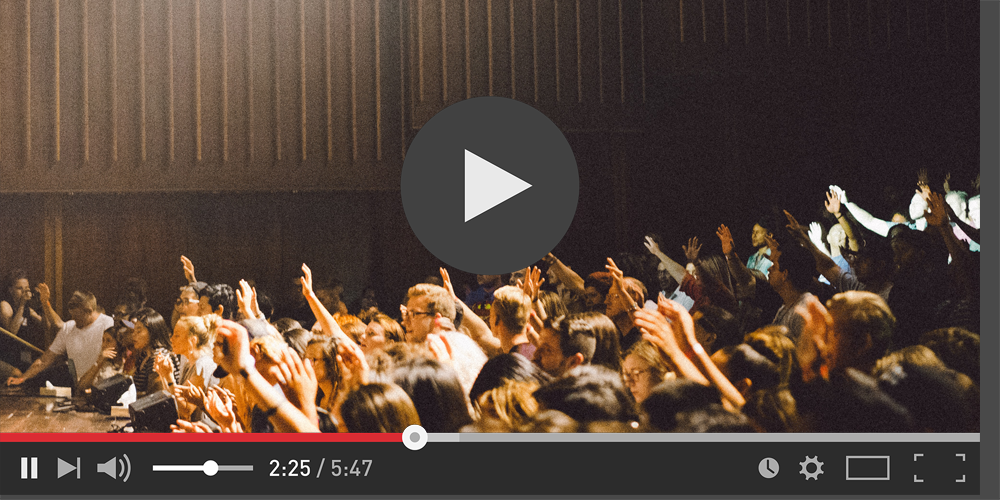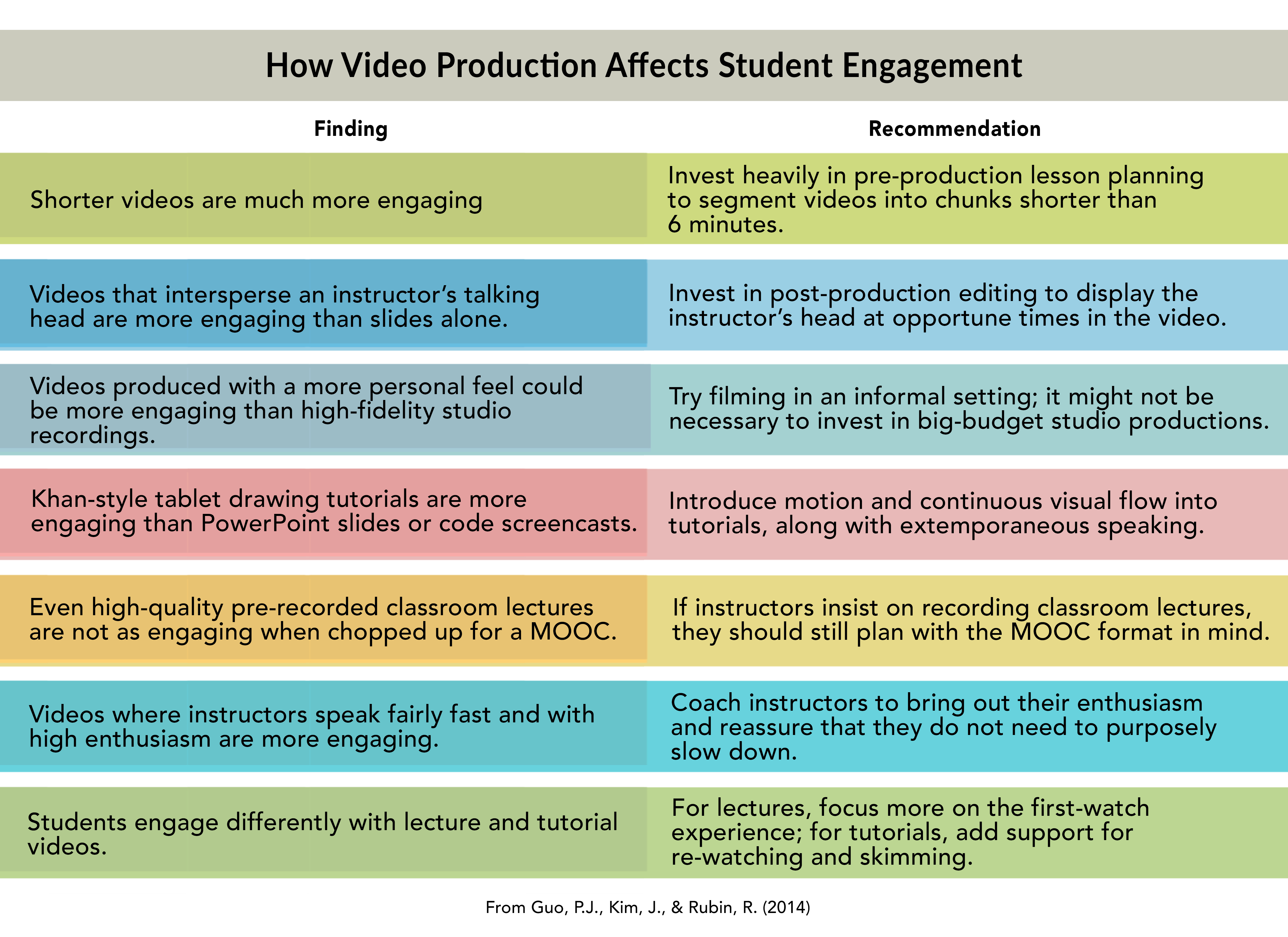
The lecture continues to be the most common instructional method for both in-person and online courses (whether synchronous or asynchoronous). Having a well-planned lecture that is organized and engaging is key to an effective learning experience. Here are some best practices to consider:
Preparing Your Lecture
- For in-person courses, a lecture chunk should be no longer than 15-17 minutes; consider a brief active learning task (e.g. think-pair-share, brief reflection question, muddiest point etc.) before continuing with another lecture chunk. This allows students to consolidate the information they have received before attending to new information. (Video lectures optimally should be 6-10 minutes for maximum attention; see below)
- Lectures should be chunked in logical segments and should be associated with concrete learning objectives.
- Slides should be well-organized with relevant headings and engaging presentation of material. Intersperse videos, podcasts, and other visual content. Here are some tips on using images in your slides to promote learning and some words of caution on fair use and copyright.
- Avoid long paragraphs and over-reliance on bullets and text. Don't include every single word you are going to say on your slide. Prepare note cards or a script. You will lose your learners quickly if you read from the slides.
- Use an AI program like ChatGPT to help write a draft script by inputing either the captions from a previously recorded live lecture or the bullet points from slides to help produce an initial draft, and then revising and editing it. (Remember that there are about 150 words in a written script per one minute of video.)
- Use a teleprompter tool you can run on a second computer or a tablet to playback your script while recording your lecture at home or in an office.
- Review the principles of Universal Design and Accessibility in preparing and delivering lectures.
- Record your lectures using Panopto, Canvas Studio, or Zoom. You may choose to make recordings available on the Canvas course site after each class or you may release recordings upon request only to learners who had to miss class due to illness or other circumstances.
- Look at using Adobe Podcast, with Enhance Speech, a new AI software that dramatically improves the quality of audio not produced in professional settings. Check with Susan at sdetrie@emory.edu for more information. The software processes a video or audio clip in minutes with a drag and drop.
- Consider these additional tips for effective lectures in in-person courses.
Teaching with Video
While it may be tempting to simply video record yourself giving a regular in-person lecture and presenting it to your online students, this is not considered best practice and is likely to leave online learners unengaged and with an ineffective learning experience. Utilizing video in your teaching requires some pre-planning to ensure that video production maximizes learner engagement. The table below outlines some of the best practices in video production for teaching. Additional guidance on effective educational videos is available here. Emory's CFDE offers a self-guided mini-course on teaching with video, where you can access guidance on finding, creating and incorporating video into your teaching.

How Video Production Affects Student Engagement.
References
Guo, P.J. Kim, J., & Rubin, R. (2014, March 4-5). How Video Production Affects Student Engagement: An empirical study of MOOC videos. [Conference session] L@S 2014, March 4-5,2014, Atlanta, GA, United States.
Fiorella, L. & Mayer, R.E. (2018). What Works and Doesn’t Work with the Educational Video. Computers in Human Behavior, 89, 465-470. https://doi.org/10.1016/j.chb.2018.07.015
Lagerstrom, L., Johanes, P., & Ponsukcharoen, U. (2015, June 14). The Myth of the Six Minute Rule: Student Engagement with Online Videos [Conference Session]. 2015 ASEE Annual Conference & Exposition, Seattle, WA, United States.
Resources:

